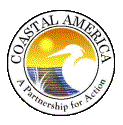



Community Conservation and Public Access of Blue Acres Property
Project Purpose:
To increase storm resiliency and reduce flood risk through ecological and floodplain restoration on former residential properties acquired by the NJDEP Blue Acres Floodplain program (a subsidiary of Green Acres).
Brief Description:
The City of Linden, like other communities in the Arthur Kill Watershed, is located in a highly urbanized landscape that can be characterized by a complex mix of land uses consisting principally of residential, commercial, and industrial. As with many urban municipalities, Linden suffers severe flooding from heavy rains and storms. One of the significant sources of flood water threatening the City comes from stormwater runoff. Due to a high percentage of impervious cover from houses, roadways, and sidewalks, there is a significant amount of rainfall runoff that is generated even during small rainfall events. These conditions are exacerbated by the historic loss of coastal wetlands, insufficient conveyance capacity into local waterways and outdated infrastructure. Due to this combination of conditions, runoff during heavy rain events cannot be readily discharged from the drainage system when the water levels in adjacent water bodies are elevated.
This is the case in the eastern part of the City in which this project is proposed. This area is largely industrial, with the exception of the Tremley Point neighborhood. The neighborhood is adjacent to the upper reaches of Marshes Creek just west of the NJ Turnpike, and is situated on the edge of the floodplain of the Rahway River and Marshes Creek. The area is particularly prone to backwater flooding because of its low lying landscape position and its proximity to extensive tidal wetlands. Nuisance flooding is especially problematic as runoff cannot drain from the area at a sufficient rate to prevent flooding during normal or elevated tidal conditions. Very simply, heavy rainfall is one factor contributing to recurring flooding.
In 2014 post-Hurricane Sandy, Rutgers School of Engineering prepared a flood vulnerability analysis for the City of Linden and the Tremley Point neighborhood. The analysis resulted in a toolbox of measures to address flood vulnerabilities. Among the recommended tools to address the problem was to install a suite of green infrastructure and floodplain enhancements to reduce stormwater runoff generated when it rains. The basis for the recommendations is that increased storage can play a role in reducing or delaying stormwater flow from entering the drainage system. Equally important is the role that these measures can play to reduce the amount of precipitation that is converted to runoff and to reduce the amount of runoff that gets into the drainage system either by diversion or delay.
This project proposes to develop and deliver an on-the-ground green infrastructure focused floodplain enhancement involving the restoration of native coastal floodplain forest and meadow as well as floodplain wetlands. The restored area would provide some natural buffering to storm surge, enhance floodplain functions to capture, infiltrate, store and slow excess stormwater to reduce the risk of future catastrophic flood damage, restore natural habitat, and provide public recreation access on NJDEP Blue Acres property. This is the first project Blue Acres is undertaking that is specifically designed to restore floodplain functions on acquired properties. Our project partners are hopeful that this project will be a model that will foster more floodplain restoration projects in the future.
Resource Values / Project Outputs:
Total restored habitat communities include 2.0 acres of native coastal forest; 0.6 acres of native meadow; and 0.5 acres of floodplain with native vegetation. The project will result in valuable environmental and community benefits to the area including an annual reduction in stormwater runoff of 4.1 million gallons. This represents a 45% reduction in stormwater runoff. Restoration of the floodplain will also help reduce community vulnerability to storms.
Cost/Budget cash and in-kind: $146,900 designs and permitting; $463,100 for construction; $200,000 for soil disposal.
Funding:
National Fish and Wildlife Foundation (NFWF): $550,000
Phillips 66 Bay Way Refinery: $235,000
Schedule: Design and permitting will begin December 2018 with an anticipated Construction start date in later summer. The project will be completed in the Fall of 2019.
Permit Status: Per a meeting with NJDEP, we anticipate Coastal GP-24 and Wetlands GP-16 permits. Permit applications will be submitted in Spring 2019.
List of Partners: NJDEP Blue Acres, City of Linden, Rutgers University, Phillips 66, NFWF, Enviroscapes, Princeton Hydro
What is requested of CWRP: $25,000
Points of Contact:
Nancy P. Sadlon
Manager of Public Affairs
Phillips 66 Bayway Refinery
O: 908 523 6041 C: 732.609.9472
1400 Park Avenue South, Linden, NJ 07036
nancy.p.sadlon@p66.com
Lynn Dwyer
Program Director, Northeast, Coastal
National Fish and Wildlife Foundation
1133 15th Street, Suite 1000
Washington, DC 20005
O: 631 627 3488 C: 631 312 8999


